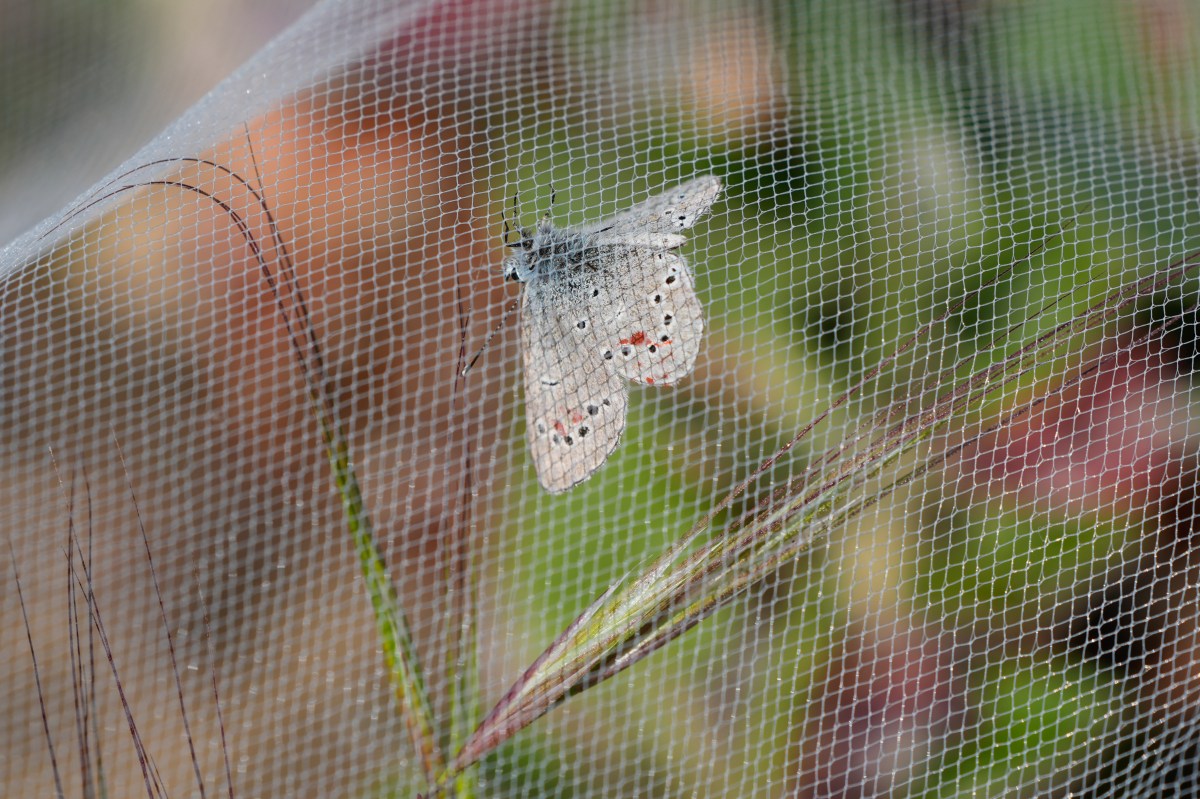SAN FRANCISCO (AP) — More than 80 years ago, a beautiful butterfly called Xerces Blue that once fluttered among San Francisco’s coastal dunes went extinct as stately homes, museums and parks ate up its habitat, marking the first butterfly species in the United States to disappear due to human development.
But thanks to years of research and modern technology a close relative of the shimmery iridescent butterfly species has been reintroduced to the dunes in Presidio National Park in San Francisco. Dozens of Silvery Blue butterflies — the closest living relatives of the Xerces Blue — were released in the restored habitat last week, officials said Monday.
Scientists with San Francisco’s California Academy of Sciences utilized the Academy’s genetic sequencing capabilities and analyzed Xerces Blue specimens in their vast collection to confirm a group of Silvery Blues in Monterey County, about 100 miles (160 kilometers) south of San Francisco, could successfully fill the ecological gap left by the Xerces Blue.
“This isn’t a Jurassic Park-style de-extinction project, but it will have a major impact,” said Durrell Kapan, a senior research fellow and the lead Academy researcher on the project. “The Silvery Blue will act as an ecological ‘stand-in’ for the Xerces Blue, performing the same ecosystem functions as both a pollinator and a critical member of the food web.”
The iconic butterfly, whose name inspired the Xerces Society, an environmental nonprofit that focuses on the conservation of invertebrates, went extinct in the 1940s.
Chris Grinter, the collection manager of entomology at California Academy of Sciences, said it all started by using their collections and “modern technology, genome sequencing to go back and extract genomes from these extinct butterflies that are over 100, 150 years old.”
Meanwhile, the Presidio Trust and other organizations worked to restore the butterflies’ native dunes, planting deerweed — a preferred host plant of the Xerces Blue and the Silvery Blue butterflies.
Wildlife experts collected dozens of Silvery Blue butterflies in Monterey County, marked them for future identification and transported them to San Francisco, feeding them a few drops of fruit punch-flavored Gatorade along the way.
The team will continue to track their movements using high-resolution photographs to identify their markings and learn ways to replicate the habitat regeneration lessons learned, officials said Scott Sampson, executive director of the California Academy of Sciences.
“The lessons we learn from the Silvery Blue here in our backyard could serve as a model for regenerating other ecosystems across California and beyond,” he said.

























